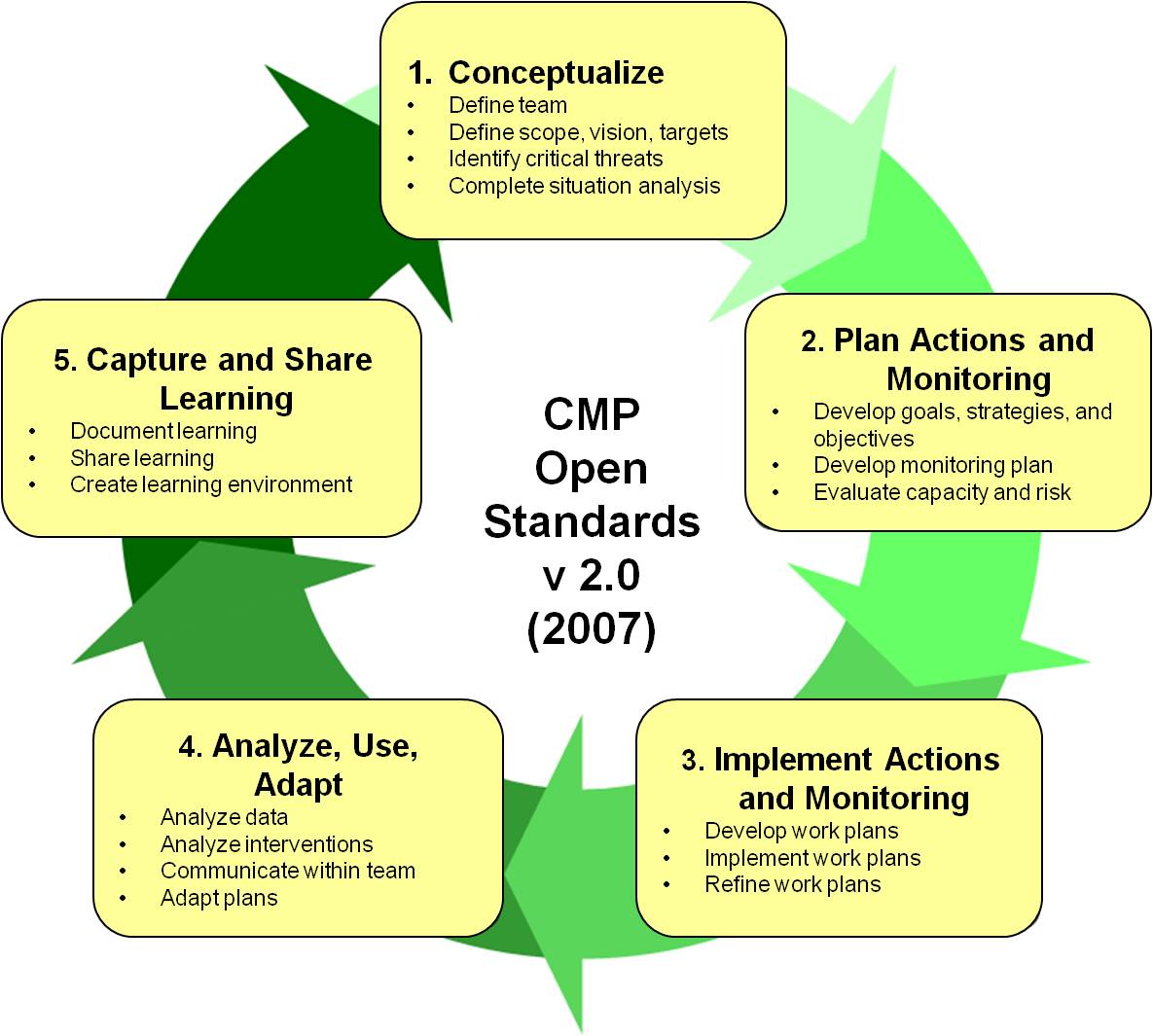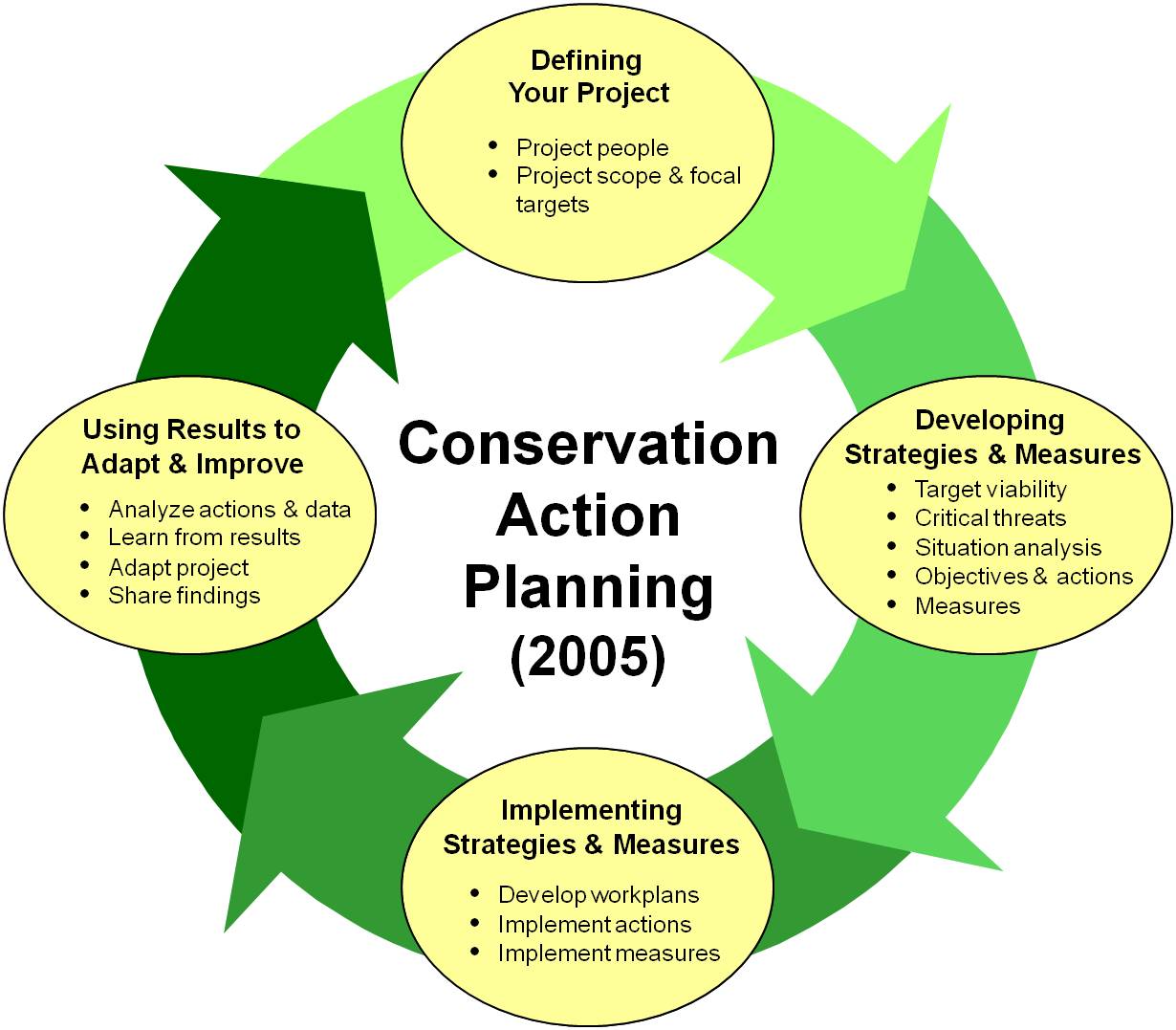The Conservation Measures Partnership's Open Standards for the Practice of Conservation
Since its inception, in 2002, Conservation Measures Partnership (CMP) members recognized that “in order to achieve our goals, the conservation community must determine the extent to which our actions are working – and we must be able to diagnose why some succeed while others do not”.
In 2004 the CMP used the results of a study which identified common concepts of and approaches to good project design, management, and monitoring, based on the experience in seven fields – conservation, public health, family planning, international development, social services, education, and business. To refine these “generic best practices” for conservation oriented efforts, CMP members shared years of acquired knowledge and experiences about project management, and agreed on a set of key ingredients or best practices which are collectively considered to contribute to the successful implementation of conservation projects across the globe. This resulted in the Open Standards for the Practice of Conservation, which were conceivedto establish common concepts, approaches and terminology for a complete results-based management cycle to help practitioners improve the practice of conservation. By following the steps and general guidance of these standards, project teams can become more effective and efficient, to achieve significant and lasting conservation results.
The term open standards was borrowed from the information technology field to reflect standards that are developed jointly through public collaboration, which are not the property of any individual or organization and can be freely available and freely distributed. These proposed standards are common property, thus they can be freely adapted to the needs of individual organizations. Because of the dynamic nature of the practice of conservation, a wide array of practitioners contribute to the constant evolution of the Open Standards for the Practice of Conservation. To access the most recent version of the Standards we encourage you to visit the CMP site.
How do the Open Standards relate to Conservation Action Planning?
It could be said that Conservation Action Planning is TNC’s institutional approach to applying the Open Standards. CAP is consistent with the concepts, approaches and terminology proposed by the Open Standards for the Practice of Conservation. Some differences consist of CAP diving deeper into some steps, and in the fact that CAP has not officially incorporated some of the valuable changes which have been added to the Open Standards in more recent evolutions. A current methods revision is taking place to ensure that TNC’s internal project management guidelines recognize best practices to contribute more effectively to lasting conservation results.

Figure 1. The Open Standards represent a project management cycle with five major steps, which are in turn made up of a total of sixteen basic practices

Figure 2. The Conservation Action Planning process represents a project management cycle with four major steps, which are in turn made up of a total of ten basic practices.
